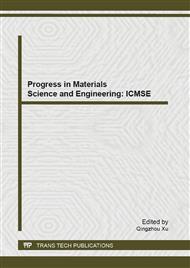p.187
p.195
p.201
p.205
p.212
p.216
p.221
p.227
p.233
Evaluation Study on Mechanical Properties of Submarine Structural Steel at High Temperatures
Abstract:
Steel framed structures have been increasingly built in Korea since the early 1970s and the use of submarine structural steel is being increased thanks to the easiness in welding and superior seismic performance. But, the risk of fire outbreak goes up because of the increase in fire load density. The evaluation of the structural stability of the structural frames at high temperatures can be done based on the mechanical properties of the applied steel at the high temperatures. In this paper, in order to get the fundamental data as to the structural stability of the steel frames built with submarine structural steel at high temperatures, coupon tests for SM 400, SM 490 and SM 520 at high temperatures were conducted and the results were compared with each other and with those of the euro-code for verification.
Info:
Periodical:
Pages:
212-215
Citation:
Online since:
October 2013
Authors:
Keywords:
Price:
Сopyright:
© 2013 Trans Tech Publications Ltd. All Rights Reserved
Share:
Citation:


